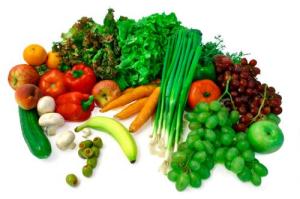Xarope de Milho de Alta Frutose causa Câncer, Obesidade e danos no Fígado
August 12, 2010
Este ingrediente encontra-se em refrigerantes e muitos produtos processados
Por Luis R. Miranda
The Real Agenda
Agosto 16, 2010
Dois novos estudos têm acrescentado mais preocupações sobre o xarope de milho, frutose (High Fructose Corn Syrup), que prejudica o corpo humano muito mais do teor de açúcar simples pode sugerir.
O xarope de milho de alta frutose contém 55 por cento de frutose e glicose 45 por cento. Ao contrário do açúcar de mesa, (aka sacarose) contém uma lista de 50-50.
Em primeiro estudo, publicado na revista Pharmacology, Biochemistry and Behavior, os investigadores da universidade de Princeton descobriram que ratos de xarope de milho de alta frutose consumir ganharam mais peso e desenvolver fatores de risco cardiovascular que mais consome ratos quantidades equivalentes de sacarose.
“Alguns argumentaram que o xarope de milho de alta frutose é diferente de outros edulcorantes, em relação ao ganho de peso e obesidade, mas os resultados deixam claro que isso não é verdade”, disse o pesquisador Bart Hoebel.
Hoebel e seus colegas deram dois grupos de ratos a mesma dieta suplementada com uma das duas bebidas açucaradas. Esteve a beber uma solução de sacarose, em concentrações semelhantes às encontradas em muitas bebidas açucaradas. A outra foi em uma solução de xarope de milho da frutose elevada em cerca de metade da concentração de uma bebida típica macio. Os pesquisadores descobriram que os ratos consumindo a solução de xarope de milho aumentou significativamente mais peso do que os ratos que consumiram a solução de sacarose.
Em uma experiência de seguimento, os investigadores compararam as alterações metabólicas em ratos alimentados com ração apenas em ratos alimentados com uma solução de xarope de milho rico em frutose. Todos os ratos consumiram a mesma quantidade de calorias.
Após seis meses, os ratos no grupo de xarope de milho ganhou 48 por cento mais peso. Também aumentou a quantidade de gordura (principalmente no abdômen) e houve uma diminuição de circulação de triglicérides. Estas alterações são consistentes com a síndrome metabólica, um conjunto de sintomas que predispõem o homem a doenças cardiovasculares e diabetes.
Cada rato consumido xarope de milho de alta frutose se tornaram obesos. Em contraste, os ratos alimentados com uma dieta rica em gordura não se tornou como obesos.
Outro estudo, realizado por pesquisadores da Duke University, uma vez envolve o xarope de milho de alta frutose em um risco maior de dano hepático.
Pesquisas anteriores já sugeriram que grandes quantidades de frutose no fígado da mesma forma que o consumo excessivo de álcool gera complicações de saúde. Um outro estudo relacionado com xarope de milho de alta frutose especificamente causou o aparecimento de lesões para a doença hepática conhecida como esteatose hepática não alcoólica (NASH).
O novo estudo, publicado no Journal of Hepatology, descobriu que o xarope de milho, frutose elevada agravou os efeitos da NASH.
“Nós descobrimos que o aumento do consumo de xarope de milho da frutose elevada está associada com feridas do fígado … entre pacientes com NASH”, disse Manal pesquisador Abdelmalek.
Os pesquisadores analisaram as dietas e os fígados de 427 adultos com NASH e descobriu que 19 por cento deles consumiram bebidas contendo frutose. 52 por cento dos indivíduos consumiram entre um e seis porções de bebidas contendo frutose por semana, enquanto outros 29 por cento consumiram pelo menos uma porção por dia. O consumo da maioria dos pacientes frutose piorou o número ea gravidade das lesões do fígado.
“Nós identificamos um fator de risco que podem contribuir para a síndrome metabólica de resistência à insulina e as complicações da síndrome metabólica, incluindo danos ao fígado”, disse Abdelmalek.
Abdelmalek notar que Nash é um problema grave que é tratável e, em alguns casos pode levar ao câncer de fígado, insuficiência hepática e da necessidade de um transplante de fígado.
Os investigadores ainda não têm certeza porque o xarope de milho de alta frutose danifica o corpo mais do que o seu conteúdo de 5 por cento de frutose pode sugerir. É a hipótese de que os efeitos negativos provenientes de enormes quantidades em que eles consomem – o xarope de milho de alta frutose é encontrada em quase todos os alimentos processados.
Outros pesquisadores descobriram que as bebidas feitas com xarope de milho de alta frutose, contendo altos níveis de carbonilas reativas que podem danificar as células. Outros sugeriram que a frutose xarope de milho de alta frutose é quimicamente modificados e, portanto, estende o corpo mais livremente do que a frutose no açúcar de mesa.




